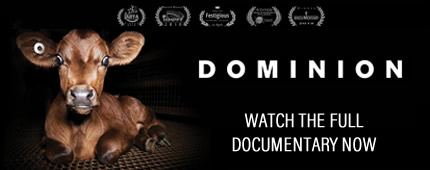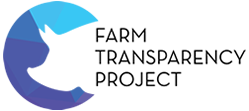Frequently Asked Questions
We believe that most Australians consider themselves animal lovers, and are opposed to animal cruelty. The fact that they regularly fund this cruelty with their purchases of animal products (see the documentary Dominion) suggests that they do so unintentionally.
At the very least, they deserve the opportunity to make an informed decision, to see more than the image presented to them by the animal agriculture industry, of happy animals frolicking in the sunshine before willingly surrendering their lives. Consumers deserve to see what modern Australian farms and slaughterhouses look like, especially when they’re being told that such places are ethical and humane.
The emergence of factory farms and high-speed slaughter lines, where cruelty and suffering are not only inevitable but considered acceptable and routine by those who profit from them, can be attributed entirely to consumer demand. Marketing slogans such as “free range” and “sow stall free”, designed to appeal to a public more openly concerned with animal welfare while meaning very little to the animals themselves, are not the answer. Bigger cages or smaller stocking densities do nothing to alleviate the suffering inherent to unnecessary and premature slaughter.
By raising consumer awareness and knowledge through forcing industry transparency, demand for animal products will reduce, and fewer animals will suffer.
The Repository and Map websites provide consumers with an unprecedented ability to see for themselves the reality of modern animal agriculture. The project takes that almost mythical concept that there are ‘factory farms’ and ‘slaughterhouses’ somewhere out there, and it grounds them in reality and says, here’s exactly where they are, what they are, and what they’re doing. It shows how these horrific places that most people wouldn’t support, have essentially taken over the country.
Knowledge is the most powerful asset available for preventing and relieving the suffering of animals. Through knowledge, consumers are able to form independent opinions, and are able to act. This action may be passive, such as no longer choosing to purchase or consume animal products, or it may be more active, in the form of protesting or campaigning against individual facilities of whose existence or proximity they were previously unaware. Beyond the individual, it allows us as a society to have informed conversations about the place of commercialised animal cruelty.
The map identifies the locations of businesses known or suspected to be engaging in animal cruelty or exploitation, with a particular focus on those partially or completely hidden from consumers, generally falling within the following categories:
- Factory farms including feedlots and dairies
- Slaughterhouses, knackeries, rendering plants, tanneries, 'processing facilities'
- Saleyards
- Large 'stations' with thousands of animals
- Smaller businesses that deliberately use false/deceptive language in their marketing, e.g. "humane" or "ethical", or that represent a niche industry
- Breeding, training, and public event facilities for animals used for gambling/entertainment
- Captivity-as-entertainment facilities
All of these business types share a public interest factor and, by definition, engage in some level of animal exploitation and, typically, cruelty. Whether the businesses are owned by individuals, families, foreign investors, large corporations etc, is irrelevant to their being in the public interest and irrelevant to the capacity to suffer of the animals used by that business. These facilities cover the vast majority of animals used commercially in Australia.
- Public directories, databases, reports, articles – published by government, industry, media
- Tipoffs from employees or members of the public
- Manual searching of satellite maps
If we haven't come across it in the above sources/methods, we don't know that it exists and so won't have marked it. Or, if it doesn't fit the criteria listed above, it will not be marked. For example, a farm consisting of a paddock with a few hundred sheep or cows would not meet this criteria; anyone who goes for a drive can see paddocks with animals in them, so identifying them on a map is not considered to be in the public interest or even feasible, especially given that animals are often moved from paddock to paddock. The types of farms and related businesses identified on the map are those generally hidden to consumers yet integral to the industry, and it is in these facilities where the most common acts of cruelty occur and the vast majority of animals used for food are raised and killed.
If your property has been incorrectly identified as a farm or other type of animal exploitation facility, please let us know using the 'Submit Information' button after clicking on that property's marker.
If you no longer operate the business, please let us know using the 'Submit Information' button after clicking on that property's marker, and we will update the marker's description and status to identify that it is no longer in operation.
If you still operate the business, but merely want to do so in secrecy without public awareness or scrutiny, your requests will not be honoured.
The map does not identify any homes, only businesses, which do not have a legal right to privacy. It is true that some of the facilities marked also have houses located on the same property, but this is irrelevant to the purpose of the map, and in over 40 years of animal activists documenting farms (without needing such a map to do so), there are no known instances of activists entering or going anywhere near the homes of farmers, or being violent or aggressive towards farmers. Activists are only interested in the facilities where the animals are kept; farmers do not live inside their sheds amongst the battery cages or sow stalls.
Facilities per category
Stats listed for: Australia
| Total | Closed | Open | |||
|---|---|---|---|---|---|
| Food | |||||
|
|
Abattoirs | 281 | 59 | 222 | |
|
|
Broiler (Meat) Chickens | 745 | 32 | 713 | |
|
|
Camels | 10 | 3 | 7 | |
|
|
Cattle (Beef) | 338 | 1 | 337 | |
|
|
Dairy | 815 | 8 | 807 | |
|
|
Deer | 10 | 0 | 10 | |
|
|
Ducks | 34 | 3 | 31 | |
|
|
Emus | 6 | 0 | 6 | |
|
|
Fish & Marine Life | 173 | 3 | 170 | |
|
|
Further Processing | 2 | 0 | 2 | |
|
|
Goats | 43 | 2 | 41 | |
|
|
Honey Bees | 54 | 1 | 53 | |
|
|
Kangaroos | 40 | 0 | 40 | |
|
|
Knackeries | 24 | 6 | 18 | |
|
|
Layer Hens (Eggs) | 279 | 39 | 240 | |
|
|
Live Export | 27 | 0 | 27 | |
|
|
Misc Birds | 0 | 0 | 0 | |
|
|
Pigs | 645 | 46 | 599 | |
|
|
Quails | 7 | 0 | 7 | |
|
|
Rabbits | 19 | 8 | 11 | |
|
|
Rendering | 7 | 0 | 7 | |
|
|
Saleyards | 157 | 6 | 151 | |
|
|
Sheep | 41 | 0 | 41 | |
|
|
Turkeys | 41 | 1 | 40 | |
| Pets | |||||
|
|
Birds | 3 | 0 | 3 | |
|
|
Cats | 1 | 0 | 1 | |
|
|
Dogs | 5 | 1 | 4 | |
|
|
Fish | 5 | 0 | 5 | |
|
|
Mice | 0 | 0 | 0 | |
|
|
Rabbits | 1 | 0 | 1 | |
|
|
Reptiles | 0 | 0 | 0 | |
| Wildlife | |||||
|
|
Deer | 1 | 0 | 1 | |
|
|
Ducks | 0 | 0 | 0 | |
|
|
General Wildlife | 0 | 0 | 0 | |
|
|
Kangaroos & Wallabies | 3 | 0 | 3 | |
|
|
Koalas | 0 | 0 | 0 | |
|
|
Rabbits | 0 | 0 | 0 | |
| Entertainment | |||||
|
|
Circuses | 0 | 0 | 0 | |
|
|
Greyhound Racing | 221 | 11 | 210 | |
|
|
Horse Racing | 393 | 4 | 389 | |
|
|
Rodeos | 58 | 0 | 58 | |
|
|
Zoos | 64 | 2 | 62 | |
| Clothing | |||||
|
|
Crocodile & Alligator | 12 | 1 | 11 | |
|
|
Fur | 0 | 0 | 0 | |
|
|
Leather | 3 | 0 | 3 | |
|
|
Wool | 27 | 1 | 26 | |
| Science | |||||
|
|
Cosmetic Testing | 0 | 0 | 0 | |
|
|
Medical Testing | 10 | 0 | 10 | |
| Other | |||||
|
|
Corporate Office/HQ | 0 | 0 | 0 | |
|
|
Distribution Centre | 2 | 0 | 2 | |
|
|
Feed Mill | 0 | 0 | 0 | |
|
|
Miscellaneous | 98 | 4 | 94 | |
|
|
Unknown | 1033 | 29 | 1004 | |



